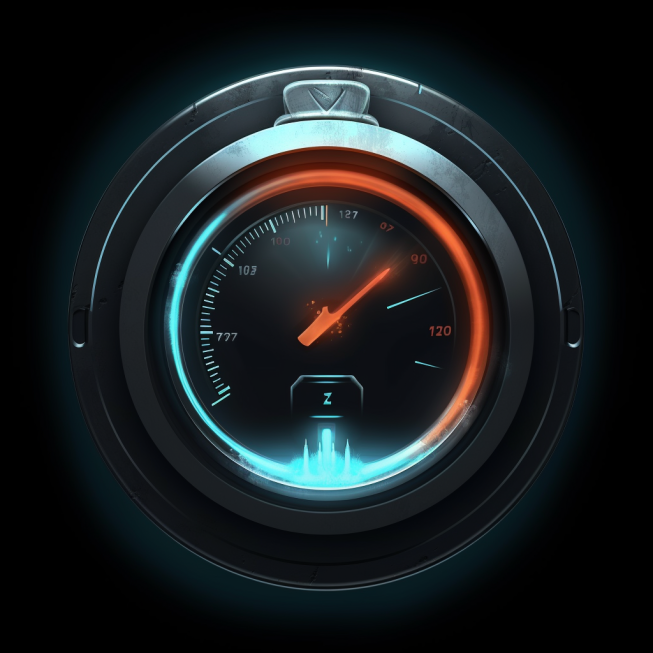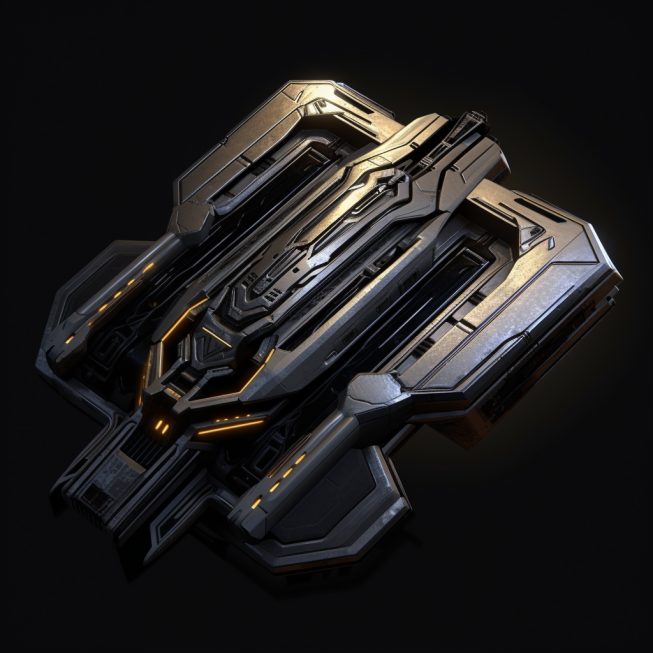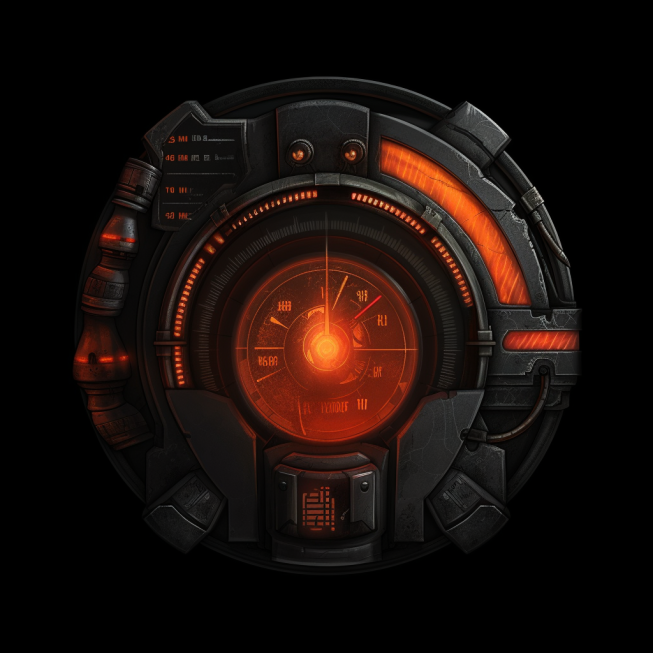For a while it has bothered me that overheating in EVE is a pretty plain mechanic. You overheat to get more out of your guns, reps, EWAR, hardeners, or speed modules and, in exchange, are subject to heat damage. I say that we could do more with this – there is potential here for an entire ecosystem of modules related to heat. We already have nanite repair paste and T3Cs which take less heat damage so why not take it a little further?
Really, what I want to achieve from a system like this is a more engaging and active playstyle that gives players another thing to think about. I want players to be able to build a new style of fit that focuses on overheat bonuses. I want them to go into a battle with heat management in mind, and potentially with offensive heat modules in mind, too. It opens up another door beyond the typical DPS/Neut/EWAR that we have right now.
How Heat Works

At the time of writing, heat in EVE Online works using a “rack” system. I argue that this term is confusing so I’m simply going to use low-slot, mid-slot, or high-slot heat status (which is a term used in-game). When you overheat a module, let’s say warp disruptor, you will begin to increase your mid-slot heat status at 1% per second. If you activate another module such a warp scrambler, it will add another 1% making it 2% per second.
This heat status value decreases on its own over time (heat dissipation) in about 9 minutes from 100%. It affects your chance to receive damage from heat with a simplified formula of
ChanceToReceiveDamage = HeatStatus * Slots * Attenuation^DistanceToModule.
For this article you don’t need to care about the slot factors or heat attenuation. What is important, however, is that every other factor is multiplied by your heat status. So if you have ~100% heat in your mid-slot heat status then you have a much higher chance to trigger heat damage. What is heat damage, you ask? Go check any module in the game and you will see that they have a heat damage value. A microwarpdrive, for example, may have a value of 8.2HP. If you are overheating that MWD then it will apply 8.2 heat damage to itself or surrounding modules depending on the previous formula!
This heat damage value is the reason why sometimes heat will jump up quickly on a module and why sometimes heat lasts ages. Some shield boosters have a heat damage value of just 1.05 HP and on a tech 3 cruiser you may even see this come right down to 0.45 HP! Thanks, heat damage reduction bonuses. For reference, every module in EVE has a total heat HP of 40.
Making Heat Even Better
My thought here is that we can create a new set of modules that both work from a lore-perspective and provide an enriching gameplay experience. In summary:
- Thermal Charge Ejector (mid-slot) – Actively reduces your ship’s heat status either in one set of slots of universally across all. Works similarly to a cap booster.
- Thermal Sink (low-slot) – Slows down the accumulation of heat status per second.
- Hybrid Polymer Structure (low-slot) – Reduces heat damage done by modules using tech 3 technology.
- Nanite Restoration Array (mid-slot) – Like an armour rep… but it repairs heat damage fast!
- Thermal Deregulator (low-slot) – Boosts performance of heated modules with a large penalty to heat damage applied.
The goal of these modules is to enable T3C-style heat management for those who are willing to give up their damage or tank modules to achieve it. It also means that, by actively ejecting heat charges (a new item), you can heat for longer and add more interactivity to players who want it. Having an active heat damage rep module, too, makes for riskier gameplay if you know that you have more chances to repair the heat you are causing.
This is very much a risk-reward system wherein you can excel by focusing and managing heat, or you can fail and lose access to some of your modules. Past these modules, there is room for offensive EWAR that add heat status to your opponents ship, but I’ll leave that up to the imagination. Here are some more thoughts on each of those modules.
Thermal Charge Ejector
Think about a cap booster; they’re simple enough to understand. They take cap batteries and use the charge stored to inject capacitor before reloading a new set from cargo. My plan for a Thermal Charge Ejector works in the same way. Instead of batteries, you are loading large copper slugs which conduct heat very well. Once hot, they can be ejected into space to remove the heat from your ship.
Mechanically, this would mean reducing overall heat status. You could use different copper slugs which are loaded to either eject heat from low, mid, high, or all slots at once. While this would not reduce damage done to a module, it would mean that you can keep your ship’s overall heat status very low, reducing the chance of damage occuring.
This takes up a mid slot and cargo space for limited, extended heating. There is a skill to this as you still need to be vigilant about your heat. It also adds yet another module to manage which opens more room for user error.
Throwing some rough numbers out there, I would envisage a 20 second activation with 10 second reload. It should drop heat in all slots by 33.33% each or it should drop 66.66% heat out of a single set of slots. We don’t want this module to sustain perma-overheating all on its own.
Thermal Sink

In the same way that tracking computers have tracking enhancers, so too does a Thermal Charge Ejector have a passive low-slot variant. A Thermal Sink would take up a low slot in exchange for a slower heat status buildup or potentially a larger heat buffer. The slower buildup is likely easier to develop since it doesn’t involve changes to the base heat functionality.
Fitting one or two of these alongside a Thermal Charge Ejector would enable near-permanent overheating of one set of slots depending on how great the effect is. It would also serve as a nice low-slot module when you don’t know what else to fit.
The powergrid and CPU are the most interesting thing to consider here. Outside of plates, we have very few low-slot modules which take up powergrid. I propose that this is a low tech module that takes up 60 PG and 1 CPU, making it very difficult to fit on destroyers and frigates but otherwise quite accessible.
Hybrid Polymer Structure

Heat damage is part of the equation that we haven’t touched yet. As a reminder, this is the damage done to a module when heat damage ticks successfully. I would like to have a one-per-ship low-slot module which enables longer overheating by reducing the damage you take directly on your modules.
This Hybrid Polymer Structure works using wormhole gases or something (I have no idea) and may reduce damage by 20-25%. This means that microwarpdrives will get at least 1-2 more heated cycles and other modules will last about 20-25% longer.
In terms of fitting, it should sit alongside a nano and take up no resources (or just 1 powergrid?). Once again, this is one of those options for people who really don’t know what to do with the last little bit of fitting or space on their ship.

Nanite Restoration Array
Really filling out this ecosystem, we can consider that players might want a way to repair their heated modules. Nanite repair paste already exists, but perhaps we can go for a sort of active heat damage repair?
This module should use a high amount of cap to run, but should very effectively repair modules. Burned out modules should remain burned out as that is part of the risk/reward of overheating gameplay.
To be quite honest, I think this is the weakest part of my plan here and we’d have to see how it would play out in testing before deciding on something which is effectively superpowered nanite.
Thermal Deregulator

All this talk of making heat safer makes me think that we need something that works the other way. A Thermal Deregulator should active exactly like the existing red giant wormhole effect. That is: much greater overheating potential in exchange for extremely fast burnout.
By combining this module with other modules above, a player can now sacrifice their slots to this overheating ecosystem to focus their fit on high-performance while overheating. This could mean overall greater DPS than any other fits that we typically see in EVE, but with the penalty of losing those slots and adding a skill requirement.
I would love to see this entire set of modules working in EVE to enable an entirely new method of fitting ships. It could change the way that gank ships are fit. It could make faction warfare fights more interesting where you need to consider the importance of heat vs raw DPS in frigate fights. It would raise the skill-ceiling of wormhole and Pochven brawls.
Perhaps more interestingly, this could also open the door to heat-based weapons or EWAR. Being able to push your opponent’s ships slowly towards burnout would be very interesting. For the nullsec meta that isn’t particularly exciting, but for those who are whaling or in hour-long brawls it opens up an entire new dimension.
This is an idea that I’ve had in my head for a while. I know this obviously won’t make it into the game since the majority of the company are allergic to good ideas. Still, a woman can dream.


Cool ideas! I think heat as a mechanic would need to be significantly stronger in most situations to justify using a module slot for it though, honestly kiters for more mwd cycles are the only people I see using them. Sadly the last thing we need for PvP is to give kiters more of an edge to encourage the most bland, non-interactive content in the game.
You could go further, and have a whole group of weapons that only work well when overheated. A bit like polarised weapons – you can eke more out of them than standard stuff, but they require a much higher skill ceiling to use safely and it could all go horribly wrong if you build it incorrectly.
So a weaponset that cold does -20% damage compared to standard, but overheated do +2% damage per 1% heat status. To really get the most out of it you’d want to redline your rack as close as you dare, then pull back fast before you burn everything out. A build using these weapons would perforce have to use thermal charge injectors, thermal sinks, nanite restoration arrays etc to be viable.
Paradoxically, these heat-driven weapons wouldn’t be as good in a T3C because they would ramp up more slowly and not get as hot.
If this were implemented, I’d suggest buying a lot of nanite past in advance. Cos the market price would jump shortly after launch ….
I remember a while back, discussing this on a major stream, and postulating some concepts in this regard. Considering that we have a PI item called coolant already available. It might be possible to start using this PI item in any one of your modules concepts.
Thermal Charge Ejector might be an interesting concept if we flip the cap battery in the reverse. Instead of dumping energy in why not dump energy out. This also opens a weird concept of “creating cap batteries” in hindsight. Just imagines any Nosferatu wielding ship becoming a cap battery creating ship in the battle. [Cap Mining] Would be interesting if one could create a “cap battery” of energy you are trying to eliminate from a ship. But otherwise. I think the concept of a “Thermal Battery” makes sense. You can scale it like the cap batteries. 25-3200 [although for balance sake we might do only 1000 or so.] You basically activate the module and as you are overheating, the activation circle fills up, and the Thermal Battery is then “consumed-ejected” So if you are overheating the rack, your 25 Thermal Battery rapidly fills up, and a “clip” of these is expended…then while it reloads the heat damage is spiking and modules are taking heat damage. Now if you were doing this with a 100 or 400 it takes a bit longer to fill up the individual Thermal Batteries and thus clips do not go as fast, but their reload is longer. So the Thermal Charge Ejector + Thermal Battery system would allow you to strategically delay damage or slow heat damage ramping which further damages modules. Allowing you to extend or safeguard your fit for a bit of a longer fighting session. This means some fits that can’t be used overheated usually with Shield Boosters + Amplifiers/Sensor Booster/Tracking Computers/ MWD + other modules. Can possibly become a bit more competitive.
The low slot module should instead of being Heat Sink, should be called Thermal Diffusion Pump or Thermal Diffusion Pump Regulator. This module should be as described a way to lower to diffuse or slow down the heat damage. So you can fit fits, without using the Thermal Charge Ejector and its Thermal Batteries. But you will have a longer time before overheating begins to spike and cause problems. From a balance perspective it should only be 1 module, or its bonus to reducing heat damage should be only like 10-15-20%? [depending on variant] Now this will also slow down the loading of the Thermal Batteries on the Thermal Charge Ejector. Which can be beneficial or bad depending on situation. [In a balancing consideration…one can not use the Thermal Diffusion Pump or Thermal Diffusion Pump Regulator…at the same time as your “Thermal Deregulator” which might be need to be named to Superconducting Power Deregulator/Superconduction Reaction Switch. So use of one will negate the option to use the other.]
Hybrid Polymer Structure, could be named Thermal Insulation Polymer Mesh or Thermal Diffusive Insulation Nanopolymer. I think the concept of a passive module, that either increases the HP of the modules in question or gives them a bit more thermal damage resist from overheating. Would be a good way to counter point the direct damage of overheating modules, might also benefit some of the more intriguing module set ups attempting to prevent overheating of next door modules. This would allow a player to go harder on glass cannon, or use one or more of your more offensive options like the thermal deregulator to go a bit harder. Right now glass cannon fits, even long range fits really don’t have an edge in this regard due to how fast some of these modules burn out versus “standard” fits when under overheating. It could be balanced by a around your 10-15-20-25% bonuses depending on variant. Note that this module should only affect modules HP/or thermal damage resist values only.
Nanite Restoration Array, maybe to Nanite Thermal Damage Regulation Unit. I think the concept of having a nanite module repair system that repairs while modules are active might be a good idea. The only question I have here, will this counter act normal nanite repair paste of individual modules as you see fit? And also this probably will need to be enough stressed, so that one can not run it and fix all the racks simultaneously. So at least it can be overloaded by simultaneous rack activation. If you are running high slots + an MWD and Shield Rep in mid + reactive in lows how will it prioritize the nanite paste distribution? And how fast will it use up its nanite repair paste. Will its cap conflict with the MWD/Shield Rep or other active modules? Maybe it shouldn’t be a cycle based system like ancil reppers, it should be one that needs to be loaded to be used. So micro/small/medium/large are possible. But now you have to balance their “nanite paste charge levels” and reload rates. Could be useful to keep your overheating modules alive, but it might cause issues with other reppers and keeping cap stable or beneficial. So it becomes a glass cannon vs tank consideration. Could be used to counter balance your “Thermal Deregulator” which might be need to be named to Superconducting Power Deregulator/Superconduction Reaction Switch. But it also will have to be either chosen to be in low or mid slot.
Your “Thermal Deregulator” which might be need to be named to Superconducting Power Deregulator/Superconduction Reaction Switch. I have a very odd consideration for this module it has to be active to get benefit. But I am debating the position of the slot for it. On some fits, having it on the high slot means some of the more combat fitted ships usually with an empty launcher or utility slot will literally have a “Kill Switch” allowing the player to activate their weapons and the Thermal Deregulator to start buffing those weapons. If I put it mid, it might give alot of benefits to many fits that have depth of middle slot. Although fits like Amarr with very narrow mids might now be unfavored if only for glass cannon duties. Whereas a low slot will penalize ships like the Caldari on the offense, but buff their tank to probably unreasonable amounts. Minmatar Ships are in particular a concerning question mark in this regard, because they tend to be more balanced in slot layout, so will suddenly gain a rather large flexibility advantage from this module no matter what position on the fit they are in. The concept also might need a very important feature added. It needs to be like one of the other modules in this game. There is a module that once activated it burns out. This module needs to have some massive downside, so I suggest this mechanic be used on this module. You can activate this once normally. [some variants might give you a potential 2-3 time.] Once the weapons or modules are turned off, the unit burns out. Or the penalty for the modules use, needs to be extreme, IE once activated the overheat damage starts to ramp massively for the benefit of this module increasing overheat bonuses. However, if one were to take this into the Red Giant Wormhole, yes this module will increase the bonus, but its downside will also stack on the overheat penalty as well!
What about modules that inflict heat damage on other ships? This isn’t one of my fully-fleshed ideas, just one that occasionally floats to the surface. It could possibly be a good counterplay to the triple-ancil boosting impossi-tanks.
The longer I think about it, the more it seems that it would be relegated to the same usage as auto-targeting or defender missiles… I still think that the idea of inflicting heat damage on others is worth some conversation.